Sodium Thiosulfate commonly used in Dechlorination of municipal wastewater, pulp & paper, power, and textile water treatment plants and as an Oxygen scavenger in oil well drilling process in Mining industries. Also chemically suitable for Aluminium cation reaction.
Sodium Thiosulfate used as a Pond / Aquarium Dechlorinator. But Sodium Thiosulfate does not treat for Chloramine, only Chlorine. Chloramine is a chemical compound composed of chlorine and ammonia and more and more utilities are converting to its use. Check with your municipal water company to learn which chemical they are using. If Chloramine is the disinfectant, please research other knowledgeable sources to learn your best solution for water treatment.
Molecular Formula ::: Na2S2O3 – 5H2O
This product also used as a Photography as a fixing agent (hypo) to dissolve unchanged silver salts from exposed negatives.
Application:
Dechlorination in municipal, pulp & paper, power, and textile water treatment plants, Oxygen scavenger – oil well drilling process Mining industries Aluminum cation reaction
Industrial production and laboratory synthesis
On an industrial scale, sodium thiosulphate is produced chiefly from liquid waste products of sodium sulphide or sulphur dye manufacture.In the laboratory, this salt can be prepared by heating an aqueous solution of sodium sulphite with sulphur.
Principal reactions and applications
Thiosulfate anion characteristically reacts with dilute acids to produce sulfur, sulfur dioxide and water-
1.Na2S2O3 + 2HCl →2NaCl + S + SO2 + H2O
This reaction is known as a “clock reaction”, because when the sulfur reaches a certain concentration the solution turns from colourless to a pale yellow. This reaction has been employed to generate colloidal sulfur. When the protonation is conducted at low temperatures, H2S2O3 (thiosulfuric acid) can be obtained. It is a somewhat strong acid with pKas of 0.6 and 1.7 for the first and second dissociation respectively.
Iodometry
In analytical chemistry, the most important use comes from the fact that the thiosulfate anion reacts stoichiometrically with iodine, reducing it to iodide as it is oxidized to tetrathionate:
Photographic processing
The terminal sulfur atom in S2O32− binds to soft metals with high affinity. Thus, silver halides, e.g. AgBr, typical components of photographic emulsions, dissolve upon treatment with aqueous thiosulfate:
2 S2O32− + AgBr →[Ag(S2O3)2]3−+ Br−
In this application to photographic processing, discovered by John Herschel and used for both film and photographic paper processing, the sodium thiosulfate is known as a photographic fixer, and is often referred to as hypo, from the original chemical name, hyposulphite of soda.
Gold extraction
Sodium thiosulfate is one component of an alternative lixiviant to cyanide for extraction of gold.[3] It forms a strong complex with gold(I) ions, [Au(S2O3)2]3−. The advantage of this approach is th
2 S2O32−(aq) + I2(aq) →S4O62−(aq) + 2 I−(aq)
Due to the quantitative nature of this reaction, as well as the fact that Na2S2O3•5H2O has an excellent shelf-life, it is used as a titrant in iodometry. Na2S2O3•5H2O is also a component of iodine clock experiments.
This particular use can be set up to measure the oxygen content of water through a long series of reactions. It is also used in estimating volumetrically the concentrations of certain compounds in solution (hydrogen peroxide, for instance) and in estimating the chlorine content in commercial bleaching powder and water.at thiosulfate is essentially non-toxic and that ore types that are refractory to gold cyanidation (e.g. carbonaceous or Carlin type ores) can be leached by thiosulfate. Some problems with this alternative process include the high consumption of thiosulfate, and the lack of a suitable recovery technique, since [Au(S2O3)2]3− does not adsorb to activated carbon, which is the standard technique used in gold cyanidation to separate the gold complex from the ore slurry.
Dose:
Process for DE CHLORINATION :::
Take 500 ml of Sodium Thiosulfate stock solution.
- Add two drops of the stock solution per one gallon of the water to be treated.
- One gallon can treat 37,850 gallons or more. Over-dosage is virtually impossible.
Note:
Analytical chemistry
Sodium thiosulfate is also used in analytical chemistry. It can, when heated with a sample containing aluminum cation, produce a white precipitation:
2 Al3+ + 3 S2O32− + 3 H2O →3 SO2 + 3 S + 2 Al(OH)3
Medical
It is used as an antidote to cyanide poisoning. Thiosulfate acts as a sulfur donor for the conversion of cyanide to thiocyanate (which can then be safely excreted in the urine), catalyzed by the enzyme rhodanase.
It has also been used as treatment of calciphylaxis in hemodialysis patients with end-stage renal disease.[6]
It is used in the management of extravasations during chemotherapy. Sodium thiosulfate prevents alkylation and tissue destruction by providing a substrate for the alkylating agents that have invaded the subcutaneous tissues. The dose may be 2mL of 0.17M (a solution of 4mL 10% sodium thiosulfate and 6mL sterile water for injection). It may be instilled subcutaneously into multiple sites using a small gauge needle. There is limited data on this method with few recommendations.
in foot baths for prophylaxis of ringworm, and as a topical antifungal agent for tinea versicolor.
in measuring the volume of extracellular body fluid and the renal glomerular filtration rate.
Sodium thiosulfate is also used:
As a component in hand warmers and other chemical heating pads that produce heat by exothermic crystallization of a supercooled solution.
In bleach
In pH testing of bleach substances. The universal indicator and any other liquid pH indicators are destroyed by bleach, rendering them useless for testing the pH. If one first adds sodium thiosulfate to such solutions, it will neutralize the color-removing effects of bleach and allow one to test the pH of bleach solutions with liquid indicators. The relevant reaction is akin to the iodine reaction: thiosulfate reduces the hypochlorite (active ingredient in bleach) and in so doing becomes oxidized to sulfate. The complete reaction is:
4 NaClO + Na2S2O3 + 2 NaOH →4 NaCl + 2 Na2SO4 + H2O
To dechlorinate tap water for aquariums or treat effluent from waste water treatments prior to release into rivers. The reduction reaction is analogous to the iodine reduction reaction. Treatment of tap water requires between 0.1 grams and 0.3 grams of pentahydrated (crystalline) sodium thiosulfate per 10 liters of water.
To lower chlorine levels in swimming pools and spas following super chlorination.
To remove iodine stains, e.g. after the explosion of nitrogen triiodide.
Similarly, sodium thiosulfate reacts with bromine to render harmless products. Solutions of sodium thiosulfate are commonly used as a precaution in chemistry laboratories when working with bromine.
In bacteriological water assessment.
In the tanning of leather.
To demonstrate the concept of reaction rate in chemistry classes. The thiosulfate ion can decompose into the sulfite ion and a colloidal suspension of sulfur, which is opaque. The equation for this acid-catalysed reaction is as follows:
S2O32−(aq) →SO32−(aq) + S(s)
To demonstrate the concept of supercooling in physics classes. Melted sodium thiosulfate is very easy to overcool to room temperature and when crystallization is forced, the sudden temperature jump to 48.3 °C can be experienced by touch.
As part of patina recipes for copper alloys.
Often used in pharmaceutical preparations as an anionic surfactant to aid in dispersion.
It can also be used as a very interesting solute in supersaturation experiments.
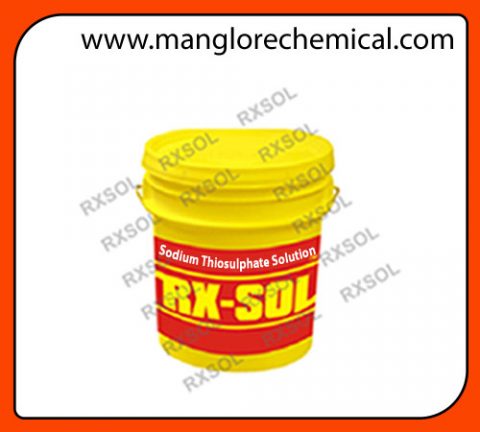
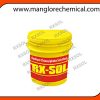
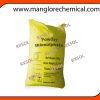

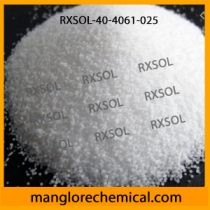

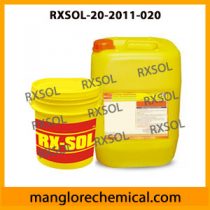
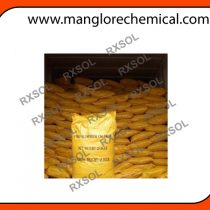
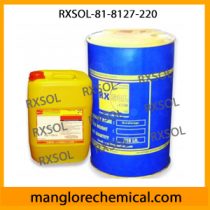
Reviews
There are no reviews yet.